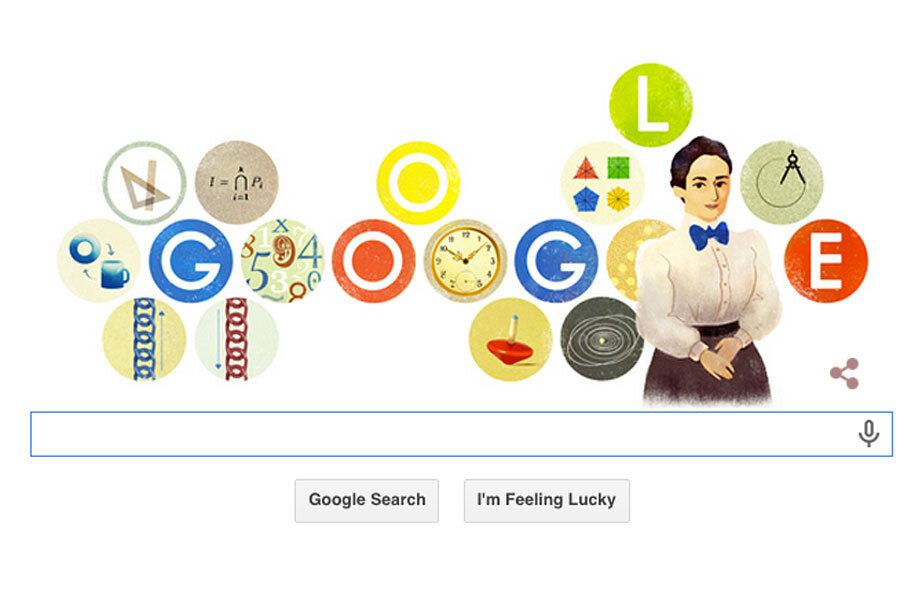Google doodle honors mathematician Emmy Noether
Monday's Google Doodle honors the German mathematician Emmy Noether, on what would be her 133rd birthday.
Born on March 23, 1882 in the Bavarian town of Erlangen, Noether contributed to major advancements in both physics and mathematics, subjects that shunned women. She was also Jewish, a serious career liability in Germany at the time.
Yet despite these obstacles, Albert Einstein even referred to her in her 1935 New York Times obituary as “the most significant creative mathematical genius thus far produced since the higher education of women began.”
Noether studied at the Institute of Erlangen, where she was one of the only female students. She went on to teach at the institute for seven years – without pay – before leaving to join the mathematics department at the University of Göttingen in 1915. Again, she was not given proper recognition and, for her first four years there, she was forced to lecture under the name of her male colleague, David Hilbert, still without pay. It was only in 1919 that Dr. Noether was given a limited professorship, which was unpaid. She began to receive a small stipend for her work in 1923.
When the Nazi government banned Jews from working at German universities, Noether moved to the United States to work at Bryn Mawr College.
Her career is frequently divided into three phases. In the first, she studied algebraic invariants and number fields, and developed what came to be known as Noether’s theorem, which theoretical physicists Leon M. Lederman and Christopher T. Hill called “one of the most important mathematical theorems ever proved in guiding the development of modern physics,” in their book Symmetry and the Beautiful Universe.
Sophie Diao, the artist who designed the doodle, originally planned to represent of this theorem, but decided that it should incorporate mathematics as well.
"After discussing my ideas with a few professionals in the field, I decided that the doodle should include references to her mathematical work too. Noether was passionate about math, despite living in an era where women were often excluded from these subjects," said Diao.
In the second phase of her career she wrote a paper advancing a theory of ideals – an ideal is a subset of an algebraic structure called a ring. Her work led directly to the development of commutative algebra.
During the last years of her career, she authored major works on noncommutative algebras and hypercomplex numbers and developed a theory of modules. Noether is also credited with contributing ideas to other several mathematicians' work throughout her career, even in fields far from her own, such as algebraic topology.
“In this doodle, each circle symbolizes a branch of math or physics that Noether devoted her illustrious career to,” said Diao. “From left to right, you can see topology (the donut and coffee mug), ascending/descending chains, Noetherian rings (represented in the doodle by the Lasker-Noether theorem), time, group theory, conservation of angular momentum, and continuous symmetries–and the list keeps going on and on from there.”







